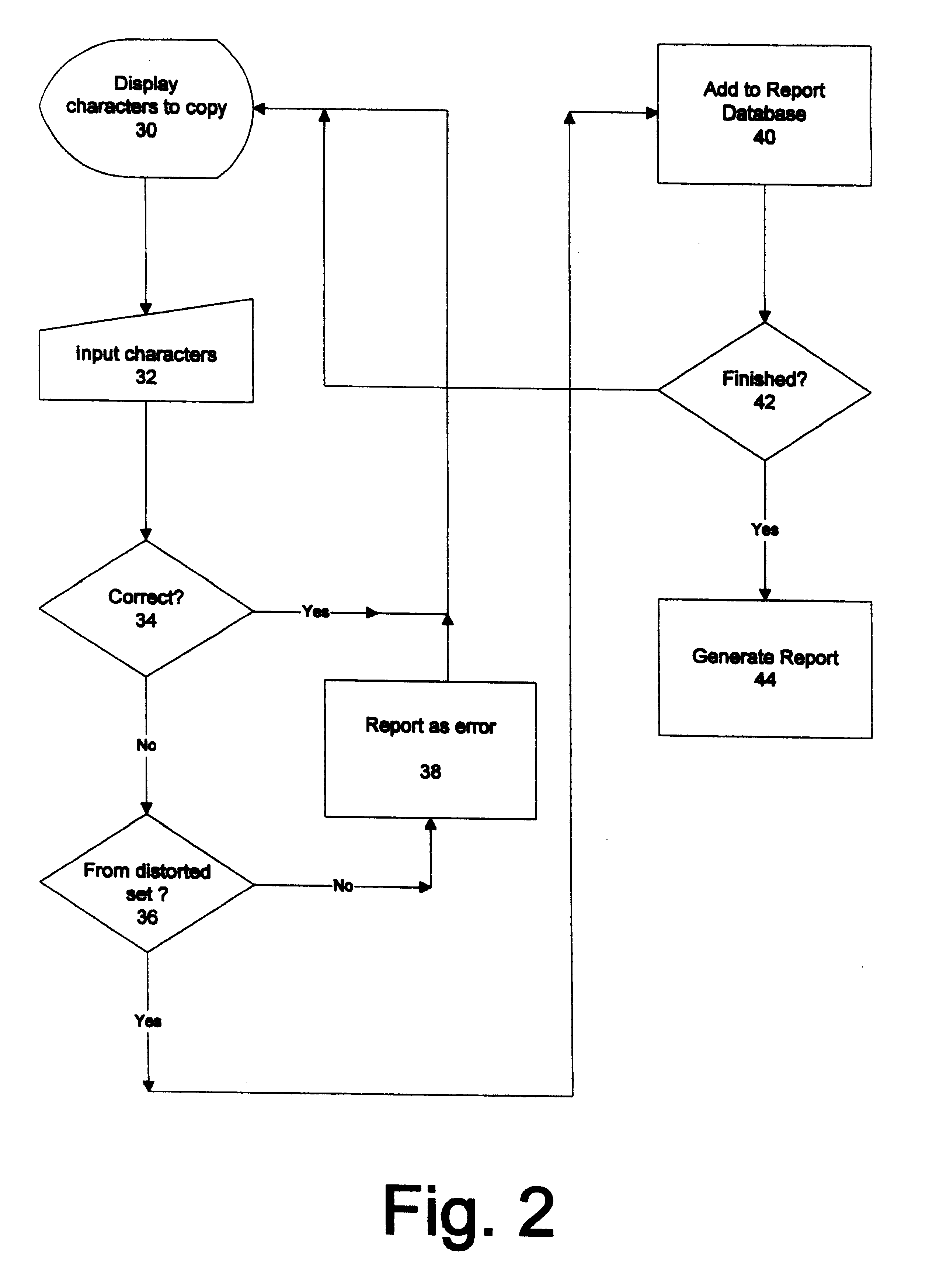System and method for incorporating dyslexia detection in handwriting pattern recognition systems
a handwriting pattern recognition and dyslexia detection technology, applied in the field of systems and methods for the detection of dyslexia, can solve the problems of excessive tripping, bumping and falling, and affecting the learning of literacy skills,
- Summary
- Abstract
- Description
- Claims
- Application Information
AI Technical Summary
Problems solved by technology
Method used
Image
Examples
third preferred embodiment
In a third embodiment of the present invention the handwriting analysis is performed in the normal way in accordance with the prior art, except that the characters considered to be errors, or not identifiable, are all stored for subsequent analysis. These unacceptable characters are stored, together with an indication of the character presented to the user which resulted in the unacceptable character.
At the end of the test session, the unacceptable characters are analyzed by the system software to determine if they contain characteristics associated with dyslexia, identifying specific patterns of perceptual dysfunction. The reports generated in this embodiment contain characterizations of the types of errors found. Referring to FIG. 7, the various errors are displayed in column 86. The results of the analysis appear in area 88. As seen in FIG. 7, a separate report may be generated for each different character presented to be written or printed by the student.
The reports will be outp...
fourth preferred embodiment-distortions
UNIQUE TO USER
It has been observed that people afflicted with dyslexia will often distort characters in a common manner, as in the case of writing mirror images of characters. These types of distortions will be referred to herein as "global distortions" In addition, many dyslexics will write characters which are unique to that particular person only. The system may be used to detect such distortions in the character sets which are unique to a particular user. When a user makes a mistake by inputting a character which has repeated, consistent characteristics, the character presented for copying, or "true character", together with the misperceived character are stored. These misperceived characters unique to this particular user, are called "local distortion"s. The characteristics of the local distortion are collected over a large number of samples and stored. Average characteristics of the sample are collected, and a typical "local distortion" is compiled. The characteristics of this...
PUM
 Login to View More
Login to View More Abstract
Description
Claims
Application Information
 Login to View More
Login to View More - R&D
- Intellectual Property
- Life Sciences
- Materials
- Tech Scout
- Unparalleled Data Quality
- Higher Quality Content
- 60% Fewer Hallucinations
Browse by: Latest US Patents, China's latest patents, Technical Efficacy Thesaurus, Application Domain, Technology Topic, Popular Technical Reports.
© 2025 PatSnap. All rights reserved.Legal|Privacy policy|Modern Slavery Act Transparency Statement|Sitemap|About US| Contact US: help@patsnap.com



